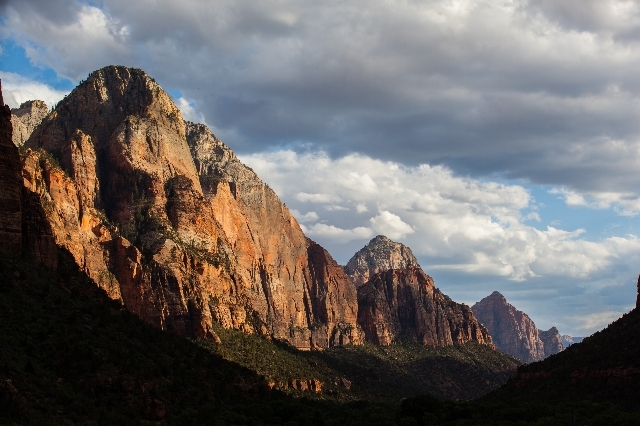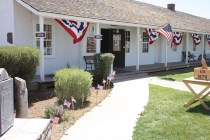Discover the joys of exploring Zion National Park in the offseason

Ah, the offseason at Zion National Park: Fall temperatures are crisp, the air pure and the silence welcome.
It’s a great time of year to visit the Southern Utah attraction, which draws an increasing number of visitors every year and is on track in 2016 to top 4 million for the first time.
Although Zion offers year-round recreational options, most visitors make the trip during the summer months, many from Las Vegas, a mere 165 miles — or about three hours — away. (Follow Interstate 15 north into Utah and exit onto state Route 9, the park access road north of St. George.)
Offseason visitors quickly discover the joys of exploring Zion when roads, trails, campgrounds and other facilities are not crowded. From December to March, Zion’s soaring landscape is transformed by snow, albeit light dustings. Colder weather heavily frosts the high cliffs and ledges, creating a look of white icing on a multi-layered cake. Melting snow creates waterfalls, and mist rises from the river among the cliffs, visible through leafless trees. Freezing nighttime temperatures create delicate icy traceries in the shallows along the river and icicles where springs emerge.
Winter visitors are likely to see wildlife such as deer, wild turkeys, bighorn sheep and elk. Overhead, golden and bald eagles can be frequently spotted. Many smaller animals take winter naps, and those that don’t hibernate are nocturnal, so watch for them on evening walks and drives.
Major park roads are at least partially open. Several trails in Zion Canyon not made dangerous by ice are open for hiking. High-country routes are accessible for cross-country skiers and hikers using snowshoes. Lower-elevation trails in desert areas too hot for comfort during summer invite winter exploration.
The Kolob Canyons Visitor Center off I-15 north of the Route 9 exit closes in winter, but the scenic road into that part of the park is kept open with access to some high-elevation trails. Inquire at the Zion Canyon Visitor Center information desk about the best trails for winter visitors and permits for use of trails in wilderness areas. The Zion Human History Museum showcases the rich American Indian culture of the Zion region.
Both centers have well-stocked bookstores for gifts and souvenirs.
During the rest of the year, the mandatory shuttle system moves visitors about to reduce road congestion, so offseason visitors have the added pleasure of driving along the scenic 6½-mile Zion Canyon Road, which parallels the Virgin River upstream. No matter the season, visitors pay a $30 park entry fee unless they have one of several kinds of federal recreation passes.
Overnight visitors can find seasonal bargains at Zion Canyon Lodge (check availability, though) in the park and in nearby towns. Inquire about seasonal package offers and other discounts when you make reservations.
Those who prefer to camp in Zion’s two major campgrounds most of the year must reserve a site in one of them or arrive early for best site selection in the other. In winter, only the larger campground is open, and all sites are available on a first-come, first-served basis. Camping fees are $20 for regular campsites and $30 for those with hookups. Camping fees are reduced by half for pass holders. Drivers of oversized vehicles such as RVs must pay a $15 escort fee to continue east on Route 9 from Zion Canyon through the 1.1-mile-long Zion-Mount Carmel Tunnel, open in winter from 8 a.m. to 4:30 p.m. Others are directed through by caravan one direction at a time because of the narrow roadway.
Winter visitors to Zion National Park will enjoy their trip most when they are well prepared. Keep track of the weather in Southern Utah and park conditions. Dress for the cold in warm layers. Keep your head covered and your hands warm. Wear waterproof foot gear with nonslip treads for snowy surfaces.
Margo Bartlett Pesek’s Trip of the Week column appears on Sundays.












